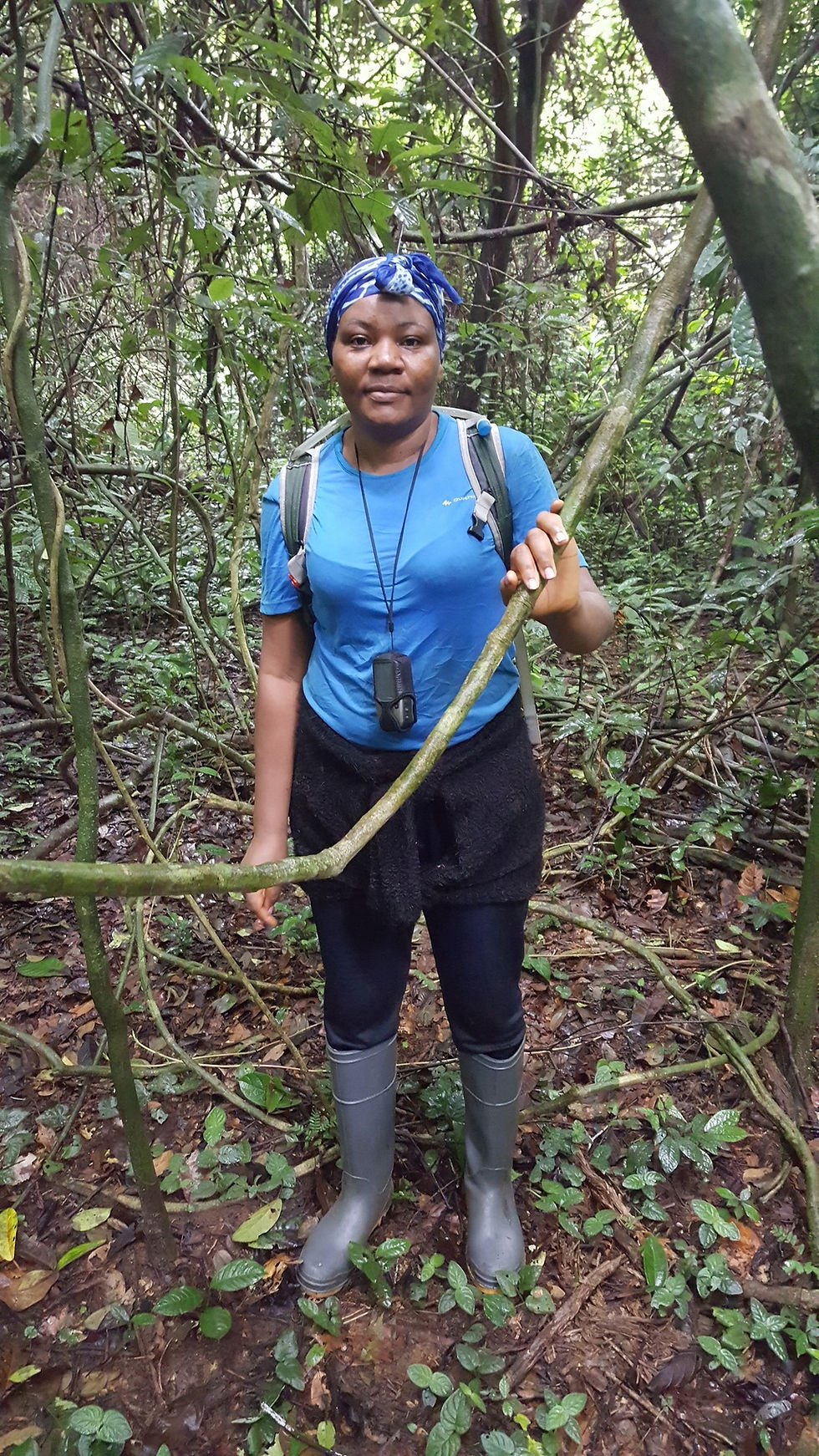Meet RCCN Members
- aghomoflorence

- Sep 3, 2020
- 3 min read
At RCCN, today, Thursday 03rd September, we invite you to meet Sylvie Fonkwo from Cameroon.

1) Who are you and on which red colobus taxa are you working on?
I am Dr Sylvie N. Fonkwo. A lecturer and a researcher at the University of Bamenda, North-west Region, Cameroon. I obtained my PhD in Ecology and Wildlife Management at the University of Dschang, Cameroon where I worked on the population status and activity time pattern of Piliocobus preussi in Korup National Park. I also carried out a large mammal (porcupine to elephants) survey in the Douala-Edea National Park. At present, I am working on the taxa Piliocobus preussi in Korup National Park.
2) How did you find yourself working or researching on red colobus monkeys specifically?
During my Master program, I had the privilege to work with WWF-Limbe as a student on internship. During that period, the then program coordinator proposed that I should work on Preuss’s red colobus in Korup National Park for my PhD. I started reviewing the existing literature on red colobus wherein I learned that it was a critically endangered species. Eager to bring my contribution to its conservation, I engaged in field expeditions and had the opportunity to see them live in their natural environment, and this sighting further grew my passion and enthusiasm to deepen my understanding of their ecology.
3) Are these red colobus populations facing any threats in your area?
Yes, Preuss’s red colobus is critically endangered with the bigger part of its population found in Korup National Park, which itself is very much under human pressure. The major threat faced by this species is poaching, and I equally had this confirmation during my PhD research.
a) If yes, how do you foresee the future of the red colobus found in your area if nothing is done?
When we look at the remaining population of Preuss’s Red Colobus in Cameroon, it is clear that urgent action is needed to rescue the small population that is left. If this is not done, then in the near future they might go extinct in Korup National Park.

4) What could be the key solution in your area to reverse the threat status?
The key solution to reverse poaching in Korup National Park is to: 1) monitor Preuss’s red colobus population on a continuous basis 2) invest further in strengthening law enforcement 3) provide incentives to eco-guards to pay particular attention to Preuss’s red colobus in the Park
5) Based on your opinion, why are red colobus monkeys less known to people compared to other monkeys?
Research on wildlife is expensive and people do not carry out research because of lack of funding. Most people are much more interested in investing in the conservation of flagship species like elephants and great apes rather than on other primates like Preuss’s red colobus.
6) Do you have any specific expectations from the red colobus conservation Network?
a) It is important that RCCN act to raise awareness and make people know that Preuss’s red colobus is critically endangered and that other red colobus taxa are threatened where they occur;
b) RCCN should provide the enabling environment for all group of red colobus actors to share their experience from different sites;
c) I finally expect the Network to help in fundraising for the protection and for more research on Preuss’s red colobus because it is important to understand the ethology of this species and better plan for their protection.
Sylvie is member of the Education and Awareness task force and is heavily motivated to support all actions to conserve red colobus monkeys and lays lots of hopes on RCCN and the red colobus conservation action plan. That said, she is opened to networking with each and everyone who shares the RCCN vision and committed to reverse the current narrative on red colobus monkeys. She can be contacted at Email: snguedem@gmail.com Phone no: (+237) 677693571.

Thank you all for visiting the RCCN webpage and post.
See you next Thursday for a new post on our red colobus actors
Aghomo Florence
Coordinator of the red colobus conservation network and the red colobus working group under the IUCN/SSC/PSG and APS




Comments